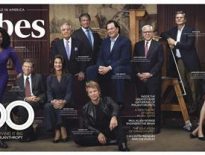(Reuters) – Oracle Corp’s hardware sales are expected to drop further after tumbling 24 percent from a year ago, the software maker said, as it strives to turn around its Sun computer division amid tight technology budgets.

The company run by Silicon Valley billionaire Larry Ellison reported on Thursday that hardware product sales fell to $779 million in its fiscal first quarter ended Aug 31. It had forecast a decline of 7 to 17 percent.
This quarter it predicted a drop of 8 to 18 percent.
“It’s a very competitive market and there is not a lot of strong demand,” said Forrester Research analyst Andrew Bartels.
He said rivals including Cisco Systems Inc, Dell Inc, Hewlett-Packard Co and International Business Machines Corp are taking market share away from Oracle in the computer market.
Global Equities Research analyst Trip Chowdhry said his research shows the market began to improve in August, emerging from a “terrible” climate in the first two months of the quarter.
Oracle also reported that new software sales rose 6 percent from a year earlier to $1.6 billion, in line with its own forecasts.
It said that new software sales and subscription revenue would range from 5 to 15 percent this quarter.
FBR Capital Markets analyst Daniel Ives said while software was Oracle’s bread-and-butter business and performing well, the hardware business was a “work in progress.”
“They’re focused on growth areas in the hardware business and are phasing out more of the commoditized parts of that business,” he said, adding that the software outlook would likely be viewed as “healthy” by investors.
Oracle acquired Sun Microsystems, the world’s No. 4 maker of server computers and also the developer of Java and Solaris software, for more than $7 billion in 2009.
Oracle met that key revenue target after reorganizing its sales operation in the United States, its biggest market, following the departure of Executive Vice President for North American sales and consulting Keith Block.
The world’s No. 3 software maker had forecast that new software sales would climb between 0 to 10 percent from a year earlier when it last reported earnings on June 18.
Investors pay close attention to new software sales because they generate high-margin, long-term maintenance contracts and are an important gauge of the company’s future profits.
Oracle posted first-quarter profit, excluding items, of 53 cents per share, matching the average forecast of analysts surveyed by Thomson Reuters I/B/E/S.
Oracle shares edged up to $32.28 in extended trade after closing at $32.26 on Nasdaq.
(Reporting by Jim Finkle; Editing by Richard Chang)





